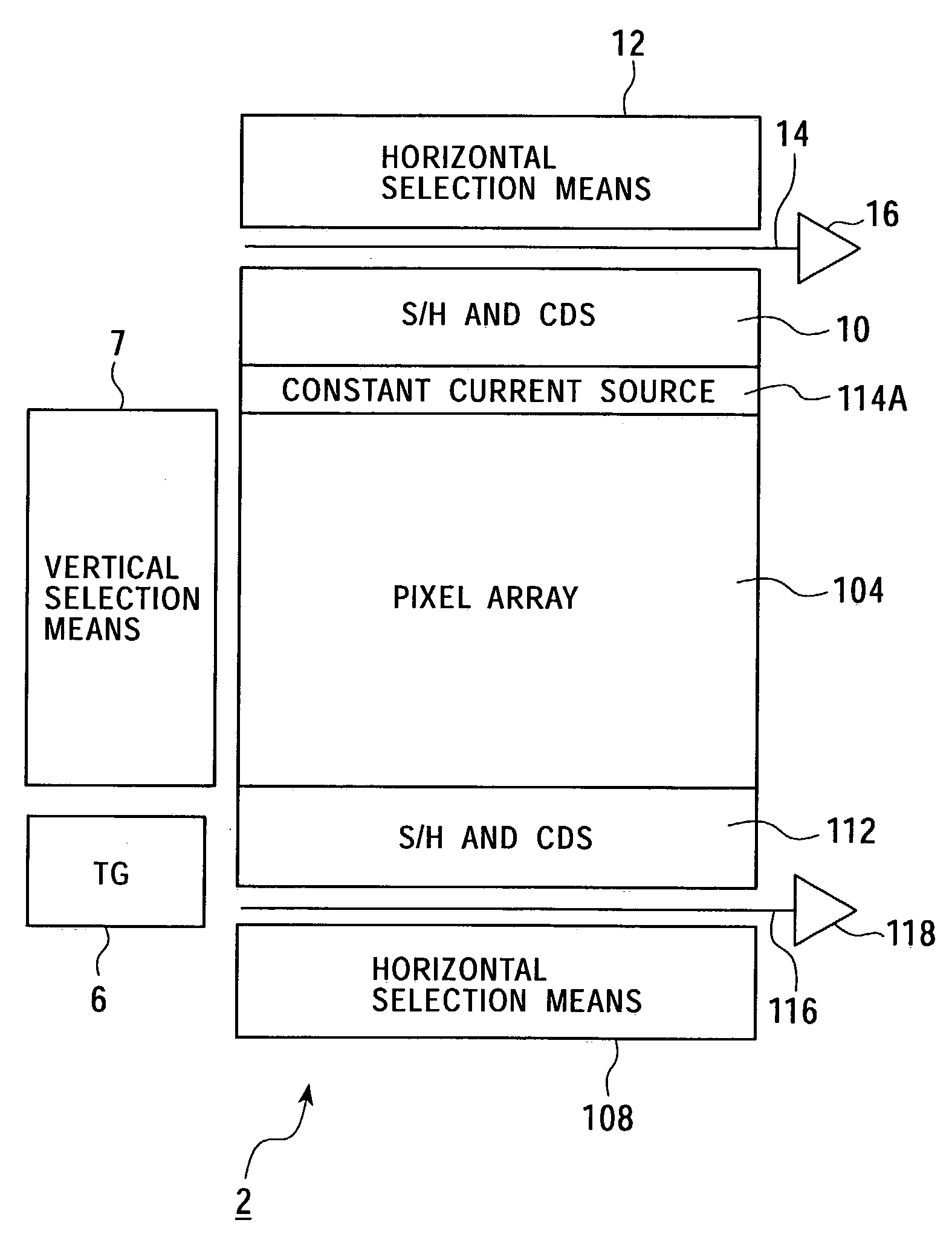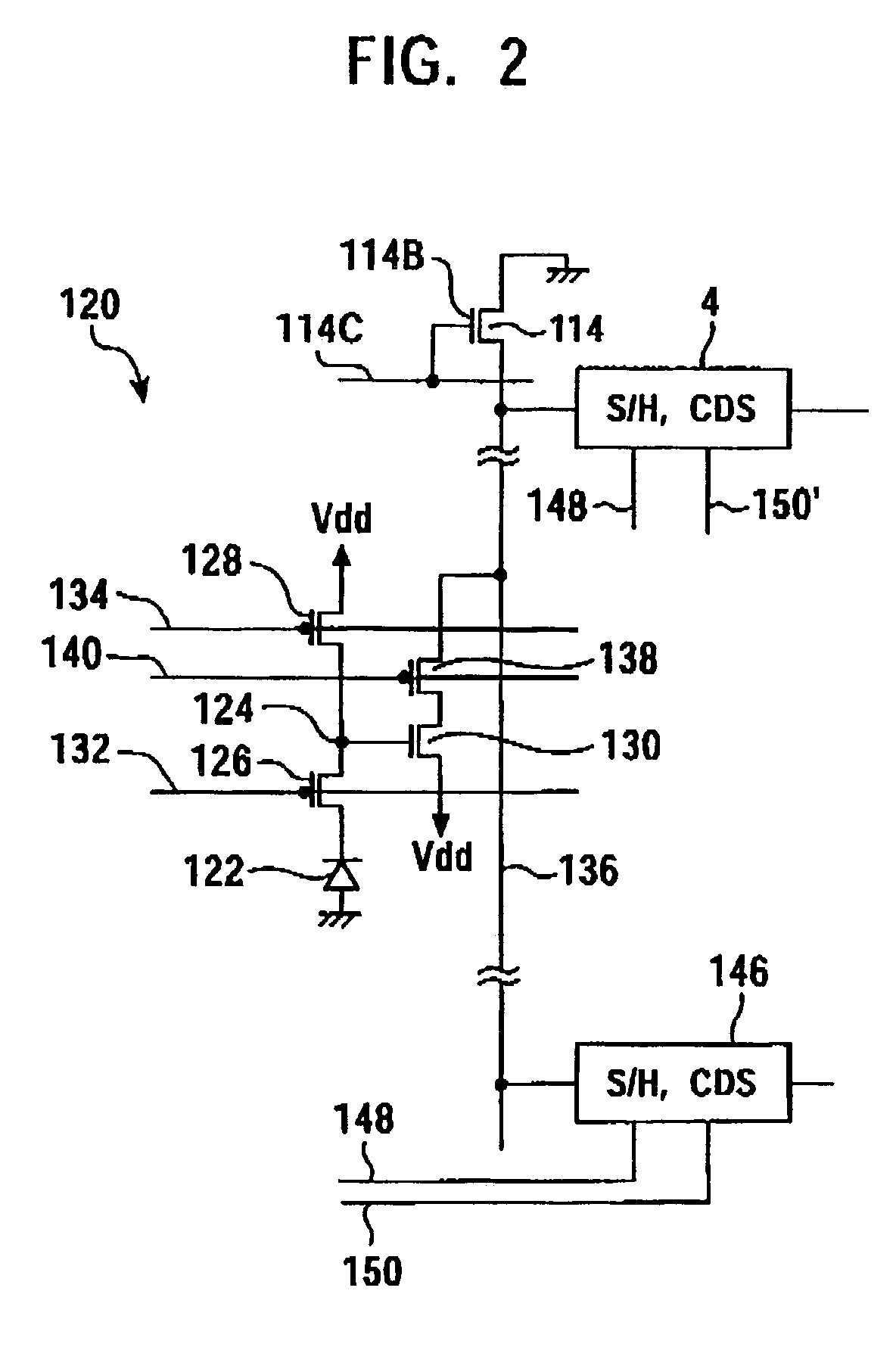Solid state imaging apparatus and method for driving the same
a technology of solid-state imaging and imaging apparatus, which is applied in the direction of radiological control devices, instruments, television systems, etc., can solve the problems of long charge time, difficult to achieve a small-sized solid-state imaging device, and inability to obtain high-quality images. , to achieve the effect of low cos
- Summary
- Abstract
- Description
- Claims
- Application Information
AI Technical Summary
Benefits of technology
Problems solved by technology
Method used
Image
Examples
second embodiment
[0082]Now, the present invention is described below.
first embodiment
[0083]In the present invention described above, pixel signals in the second shutter line are output (as the output 1) from the output unit 118, and pixel signals in the selection line are output (as the output 2) from the output unit 16, and thus the signals output from the output units 118 and 16 originate from different lines. This makes it necessary to delay one of the output signals using a delay element or a memory before the two output signals are mixed together to obtain a final signal with a large dynamic range.
[0084]In the second embodiment described below, to avoid the above problem, two signals are output from the same pixel at the same time thereby making it possible to directly mix the two signals without using a delay element or a memory.
[0085]The solid state imaging apparatus according to this second embodiment of the invention can be constructed in the same manner as shown in FIG. 1, and each pixel can be constructed in the same manner as shown in FIG. 2. Furthermore...
third embodiment
[0113]the present invention is described below.
[0114]FIG. 6 shows a solid state imaging apparatus according to the third embodiment of the present invention.
[0115]As shown in FIG. 6, the solid state imaging apparatus 34 according to the present embodiment includes a communication unit 54 for receiving an external signal for controlling the driving mode of the solid state imaging apparatus 34.
[0116]In FIG. 6, the horizontal selection means 108 and the horizontal selection means 12 are combined together into a single horizontal selection means 168, and the S / H-CDS circuits 146 and 4 and the output units 118 and 16 are combined into CDS-AGC units 160 and 162. The output signals from the CDS-AGC circuits 160 and 162 are mixed together by a signal mixer-A / D converter 164, and the resultant mixed signal is output in the form of a digital signal over a bus line 166. Essentially, these circuit elements are similar to those of the solid state imaging apparatus 3 shown in FIG. 1, and they are...
PUM
 Login to View More
Login to View More Abstract
Description
Claims
Application Information
 Login to View More
Login to View More - R&D
- Intellectual Property
- Life Sciences
- Materials
- Tech Scout
- Unparalleled Data Quality
- Higher Quality Content
- 60% Fewer Hallucinations
Browse by: Latest US Patents, China's latest patents, Technical Efficacy Thesaurus, Application Domain, Technology Topic, Popular Technical Reports.
© 2025 PatSnap. All rights reserved.Legal|Privacy policy|Modern Slavery Act Transparency Statement|Sitemap|About US| Contact US: help@patsnap.com



